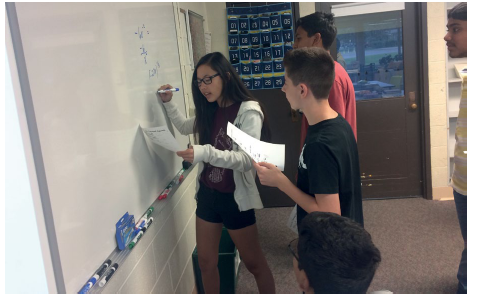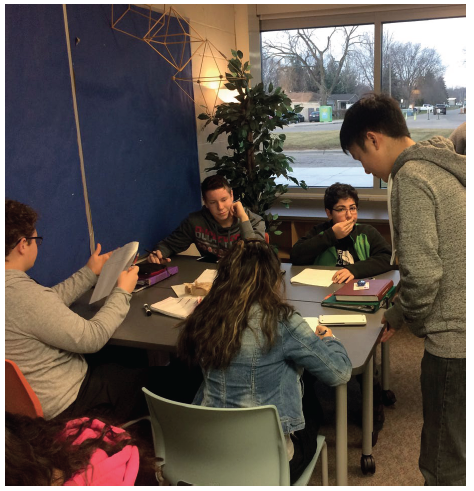
The Cultures of Thinking framework developed by Project Zero’s Ron Ritchhart focuses on eight cultural forces that exist in classrooms: expectations, language, time, opportunities, interactions, environment, routines, and modelling. According to Ritchhart, these forces exist in every classroom whether they are given attention or not. The idea is to properly leverage those forces so that classrooms become places where thinking, collaboration, independence, and deep-learning rule and become common-place, rather than classrooms that stress compliance and work, and which are teacher-centred.
Harnessing meaningful interactions is a crucial part of creating a Culture of Thinking in a classroom. As Ritchhart points out, ‘At the heart of much of this theoretical work is the belief that transformative learning–that is, learning that cultivates the development of the whole person and strives for more than the simple transmission of information–is more likely to happen in community than in isolation. Such communities are largely democratic in nature, stressing mutuality, support, connection, and shared decision making’.1 Our last article focused on leveraging opportunities through the restructuring of lesson plans.2 This article will explore how to leverage interactions within existing lesson plans. Although many of the examples will focus on maths and science, the core principles that are drawn from these cases can be applied to any classroom.

Pressing for thinking
I used to think that a focus on coming to a consistent, reproducible answer in chemistry did not provide space for discussion about competing ideas. However, through a focus on concepts and pressing for thinking, I have found that richer discussions occur. Before embracing Cultures of Thinking I would solicit student answers and give feedback on whether they were right or wrong. Now these discussions of problems are very different. During a discussion of ionization energy in MYP Chemistry,3 some students shared that they thought the ionization energy would decrease a group, while some thought it would increase. Rather than pointing out the data that supports one thought and not the other, I had students share their reasoning with a partner and then had different students share their reasoning with the class. From sharing their reasoning and focusing on the ‘why’ of their choices, students were able to have a more nuanced conversation about the trend for ionization energy and come to a class agreement. This restructuring of problem discussion can be integrated into many existing lessons.
When transitioning to a classroom that focuses on thinking, the students need a cue to let them know to share their thinking. An easy way to communicate this new focus on thinking is using the ‘What Makes You Say That?’ thinking routine.4
This short question communicates to the student that you are focused on the reasoning and not just the answer. A variation I have used that has also drawn out more thinking is asking the students to ‘tell me more’. Students can struggle with sharing their thinking at times and providing scaffolds to help them organise their thoughts can help move the discussion forward.